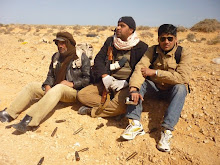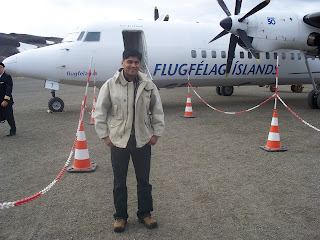 Working on the Ruchika Girhotra molestation case leaves you with a feeling of utter helplessness and sheer frustration. Unrepentant policemen, bureaucrats and politicians even today – 19 years after they let down Ruchika and her family.
Working on the Ruchika Girhotra molestation case leaves you with a feeling of utter helplessness and sheer frustration. Unrepentant policemen, bureaucrats and politicians even today – 19 years after they let down Ruchika and her family.They literally forced her to commit suicide. They are perhaps as guilty as Rathore. It is because of people like them, Rathore came out of the court room smirking at the system. Six months for a life!
THE UNHOLY NEXUS
Hu
 kum Singh, former chief minister of Haryana, Sampat Singh former home minister of Haryana are perhaps as guilty as Shambhu Pratap Singh Rathore, the evil child molester. On Centre Stage was R.R. Singh, former Director General of Police Haryana and J.K. Duggal, former home secretary Haryana.
kum Singh, former chief minister of Haryana, Sampat Singh former home minister of Haryana are perhaps as guilty as Shambhu Pratap Singh Rathore, the evil child molester. On Centre Stage was R.R. Singh, former Director General of Police Haryana and J.K. Duggal, former home secretary Haryana.R.R. Singh, then the senior most serving police officer – DGP of the state – carried out an inquiry and recommended that a case of molestation be filed against Rathore. This is what the CBI said in its charge sheet.
``After conducting the enquiry into the incident, Sh RR Singh concluded that whatever Ms Ruchika had stated about her
 molestation by Sh SPS Rathore was based on true facts and that he was of the considered opinion that a cognizable offence was made out. Sh RR Singh, therefore, had recommended registration of a case under appropriate sections of the Indian Penal Code and had forwarded his enquiry report 3.9.90 to the Home Secretary Govt of Haryana.
molestation by Sh SPS Rathore was based on true facts and that he was of the considered opinion that a cognizable offence was made out. Sh RR Singh, therefore, had recommended registration of a case under appropriate sections of the Indian Penal Code and had forwarded his enquiry report 3.9.90 to the Home Secretary Govt of Haryana.Despite this no action was taken against Rathore. Why?
RR Singh told me he had forwarded his report to JK Duggal, then Home Secretary. Duggal told me he had forwarded the report to Sampat Singh, then home minister Haryana in September 1990 itself, less than a month after the molestation. And yet nothing was done against SPS Rathore. Why?
According to both RR Singh and JK Duggal, then home minister Sampat Singh was to blame. He sat on the report. Sampat Singh was also on Centre Stage. He blamed then chief minister Hukum Singh for sitting on the file.
My only point to Sampat Singh was had he taken action against Rathore in September 1990 itself or even in October, Ruchika might still have been alive. God forbid had their own daughters been at the receiving end of this evil man’s designs would they have been satisfied with just pushing files from one table to the other.
Evil needs to be nipped in the bud. These men by their sheer inaction – had encouraged Rathore. Duggal and RR Singh insisted politicians did not permit them to take action against Rathore.
While the two officers did the right thing on file, I still cannot comprehend how they could be content by just recommending action on file and forgetting about it completely. After all it was the life of a 14 year old girl. Both RR Singh and Duggal continued to live in Haryana. They were reading newspapers and knew about the torture Ruchika and her family underwent. And yet!
This is worse than the court of later Mughals where the order of the Mughal court was not even implemented from Delhi to Palam.
RATHORE’S `TERROR TACTICS’
I
 sat shocked as Ruchika’s father Subhash Chandra Girhotra wept and narrated how Rathore unleashed the worst form of harassment and torture over the next three years forcing Ruchika to end her life.
sat shocked as Ruchika’s father Subhash Chandra Girhotra wept and narrated how Rathore unleashed the worst form of harassment and torture over the next three years forcing Ruchika to end her life.What was Rathore – a Mafiosi in uniform? Nobody had the power to touch him as he unleashed the worst form of terror on a regular middle class family. Rathore allegedly put pressure on Sacred Heart School (where incidentally his own daughter Priyanjali also studied and was Ruchika’s classmate) to expel Ruchika on grounds of indiscipline and non payment of fees.
A case should be registered against the school principal and management for buckling under this evil man’s pressure. They too have Ruchika’s blood on their hands. There is nothing sacred about the Sacred Heart School of Chandigarh’s sector-26.
When Ruchika’s father still did not take back the complaint against Rathore, Ashu, Ruchika’s brother was picked up by the police. He was booked under several false cases of car theft. Beaten up, paraded handcuffed and tortured in custody.
Ruchika’s father was crying when he said on our show that Rathore forced him to sell off his house in Panchkula and flee the city.
But the horror had still not ended. Ruchika consumed pesticide. Rathore is accused of tampering with the post mortem report and getting the doctors to say she died of an overdose of anti-obesity pills.
That is not all. According to SC Girhotra, he ensured Ruchika’s body was released only after Ruchika’s father signed on some blank papers. Ashu was released from police custody only after Ruchika’s funeral. Not just that Girhotra told us that Rathore did not release Ruchika’s body till the time the family signed some blank papers.
CBI’S WEAK CASE
The CBI knew all of this. All of it. The people of Chandigarh and Panchkula knew
 it. The judges knew it. And yet it took 9 years for an FIR – first information report to be registered against Rathore. Worse – the CBI did not mention any of this in its chargesheet.
it. The judges knew it. And yet it took 9 years for an FIR – first information report to be registered against Rathore. Worse – the CBI did not mention any of this in its chargesheet.Look at the limp CBI chargesheet when it talks of Ruchika’s suicide. On page 10, the CBI says ``The investigation has also disclosed that after the incident of molestation Ms Ruchika remained confined to her house and remained depressed. Later Ms Ruchika committed suicide by consuming poison on 28.12.93 and died on 29.12.93.’’
Rajesh Ranjan, then CBI Deputy Inspector General of Police owes not just Ruchika’s family but the nation an explanation. Why such a limp charge sheet? Is loyalty to lanyard more important than the fight for justice.
Why did the CBI not make Ashu a prosecution witness?
Why was a case of filing false cases and fabrication of evidence not registered against Rathore?
Why was he not booked for intimidation of witnesses?
Why was Ruchika’s school not booked for abetment to suicide?
Why were Haryana politicians, bureaucrats and cops not questioned and booked for ``sitting on the file.’’
RATHORE ABOVE THE LAW
Clearly Rathore knew he was above the law. Politicians – from Hukum Singh, Bhajan Lal, Bansi Lal to Om Prakash Chautala – nobody did anything to stop him. They all knew what he was up to. Today these politicians are crawling out of the wood work trying to say they are not guilty. But they are. They promoted him, gave him police medals for meritorious service, made him director general of police of Haryana and above all failed to uphold the dignity of the law.
And that is why even after 19 years Rathore walked out of the courtroom with a smirk on his face. He had beaten the system. For 19 years of pain and trauma he caused – all he got was 6 months of jail (bail within an hour) and Rs 1,000 rupee fine.
The punishment for molesting a minor girl in this country if you are SPS Rathore is only 6 months imprisonment and a fine that is perhaps equal to being challaned while driving and talking on your cell phone.
WHAT NEEDS TO BE DONE NOW?
Reopen the abetment to suicide case. Hear it in a time bound manner.
Take away his pension and police medal forthwith.
Identify the policemen, bureaucrats and politicians who sat on the files.
 Proceed against them for their acts of omission and commission.
Proceed against them for their acts of omission and commission.Take stern action against the Sacred Heart School authorities for letting down Ruchika.
Award compensation to Ruchika’s brother and father. But not from the state exchequer. Take that money from the salaries and pensions of guilty officials and politicians.
Restore our faith in the system! Enough is enough!























 Step 1: arrest him.
Step 1: arrest him.





